Last Updated on December 19, 2012 by stevehoggbikefitting.com

Gotz Heine (pronounced Gertz High neh) is a little known innovator behind the scenes in world cycling. Gotz is best known as the originator of midfoot cleat position and manufacturer of Biomac shoes but has a number of other firsts to his name. The first carbon shelled ‘bathtub’ construction cycling shoe; the first to use polyurethane (the shiny stuff) for cycling shoe uppers; the first to use reflective piping on cycling shoes as a night safety device; played a part in the development of SRM’s; the first to coat fabric with titanium nano particles as a means to reduce body temperature of athletes, with more in the works.
About 5 years ago I wrote something on CyclingNews that attracted Gotz’ interest in response to a questioner. We started a correspondence where he explained the benefits of midfoot cleat position as he saw them. I was interested as Gotz’ arguments were cogent and made me want to give midfoot cleat position a try. My first attempt was a disaster and as I now know, I hadn’t lowered my seat enough. However, when I returned to my normal shoes and position, I felt like I was riding a stranger’s bike. This is what really got my attention. If a short 30km ride with a new cleat position could totally disrupt well embedded cycling motor patterns, many years in the making, then to my way of thinking, I needed to explore it further at length and have done so with good results.
After many conversations with Gotz, he visited us in Sydney for a couple of weeks and I am proud to call this original thinker my friend. And I still ride his cleat position!

Q: Give me some history Götz. Where did you grow up? What prompted you to enter cycling? What was your path to the pro ranks.
A: Munich, the capital of Bavaria (GER) is my home town where I grew up, did my studies and started cycling at the age of 16. Two years later I was selected for the German National Road Team. The following year I qualified for the National Track Team. We missed out on the Moscow Olympics so I was able to finish High School and got invited to join Germany’s only pro team of the 80’s, the Kotter’s Racing Team.
Q: You were involved in a long breakaway in Paris – Roubaix as a 19 year old. Tell me about that and other career experiences that stand out.
A: In my first year as a pro I had to participate in all the major Classics. It was to get a good build-up for the Giro, they said. Finishing a surprising 22nd in Gent – Wevelgem I got selected to race Paris-Roubaix as well. When La Vie Claire’s Patrick Bonnet launched his early attack I jumped his wheel and we teamed up gaining almost 12 minutes on the bunch. Then after 160Kms a puncture ended my race when the race service missed me. Other positive highlights I experienced were in Australia and South Africa and also when I finished third in the German Road Championships one year later. However, nobody could be bothered as I still was a complete greenhorn.
Q: I know you became disillusioned with the pro scene early on. Is there anything you care to say about that?
A: By the age of 25 I had visited almost every continent I wanted to see and mind you, I simply didn’t feel talented enough for the higher ranks of professional cycling. Drugs were no option for me and after all, I had finished my studies as a naturopath and was keen to run my own practice and raise a family. This I felt, was more rewarding than counting the race courses year in, year out.
Then a German sponsor tempted me to establish a team strictly run under a No-Drugs policy. So I returned to the amateur ranks and started managing, training and racing this amateur team I had put together. Although we started off with a minimum budget and scarce means – we started winning! Our second season saw us 15 times on the top of the podium already.
Q: So you went on to have a career as a team director and coach. Can you give me an outline of that time, the athletes you have been involved with and the highlights of that experience?
A: During my time as a Director Sportif I saw a vast number of evolving and fading stars pass by.
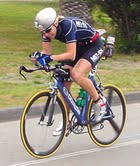
I had plenty of practice with riders who were injured, displaced vertebrae or tore their ligaments in crashes. You can say I learned and studied the art of healing on the Battle Fields of Cycling where the only form of treatment that worked according to my policy was that which guaranteed the rider’s return to the race the next morning. Everything less I considered a loss, full stop. I even enjoyed mercy when I could save some athletes’ lives after they had crashed terribly or suffered from depletion of minerals and other incidents. Later on, the experience I gained through this helped save the lives of three of my own children. Although terrible at the time, with the passing of a couple of days, those incidents felt and still feel like the greatest reward of all.
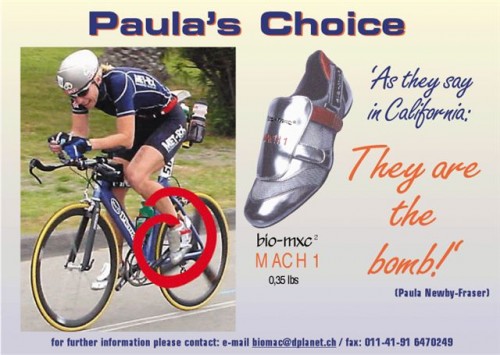
An old advertisement for the Mach 1 shoes Q: So you returned to the amateur ranks and raced around the world for some years. What were the highlights of that time?
A: I carried on for another 4 years only. One highlight was a three-day track event in Paarl, South Africa where I had teamed up with a German 6-day pro to eventually win the event. That was still during the Apartheid regime. You see, for me cycling and sports in general meant a means of travelling and studying rather than winning; a method to get to know other cultures, people and countries rather than domination and race wins. Representing Germany in countries like Australia, Austria, Belgium, Costa Rica, France, Guatemala, India, Ireland, Italy, New Zealand, the Netherlands, Puerto Rico, Tunisia, Venezuela and even the Eastern Bloc which was about to fall apart, was a great experience. For example, we were the first German team to compete in Lidice, a Czech village in the Eastern Bloc where during WWII, the Nazis had exterminated the male population. We felt like the ambassadors of a new Germany racing in Hungary, Slovakia, Yugoslavia and even in Germany itself, where we knew for certain that at the level of competition we participated, the number of ‘clean’ competitors was a ‘close-to-zero’.

The Biomac Y2, lightest shoe available is an evolution of the Mach 1 Q: Somewhere along the way you trained as both, a chiropractor and a naturopath. Can you expand on that experience please?
A: In the English speaking world I feel there is a peculiar separation between a naturopath’s business and the one of a chiropractor. Personally, I got introduced to the art of chiropractic’s by a German doctor of acupuncture who had travelled in China a lot. My sporting background and my vast experience with athletes during tours and stage races helped to separate the ‘narratives’ from the stuff that worked. Soon I could develop my own way of treating and curing people of their various ills. My working visits to India rounded up my training I’d say.
Q: It is not widely known that you have been involved in many developments in cycling related technology. Can you expand on that please?
A: Well – when they say war is the father of innovation its true for me and cycling. When we both lived in Grünwald, a small village near Munich, Uli Schoberer started developing his now famous SRM system. A friend introduced us and due to my contacts with POLAR, I was able to assist in adding heart rate monitoring to his system very soon. This feature I felt was still missing, so my medical background told me that it was an important omission. History proved me right and SRM became a very successful story.
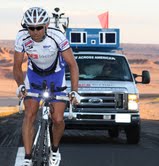
Dani Wyss on his way to winning the 2009 edition of RAAM in Biomac shoes with midfoot cleat position Our team’s frame builder Sandro Paletti introduced the first polygonal titanium tubing and when Giorgio Siligardi, an Italian mechanic who was good at CNC machining, developed a pedal version of my mid-foot position, I felt it was about time to design my first shoe, the MACH1. Instead of adding weight with a bulky pedal, a modified shoe would do both; reduce weight and facilitate the pedalling movement, I thought. Then I got into designing titanium frames to accommodate the changes to position necessitated by a mid-foot cleat position, as well as a couple of other innovations which have their origin in that time. I applied for a Patent on a method of introducing a Nano-layer of Titanium on plastics to seal its vapours and another one for coating clothing elements with titanium to reduce perspiration and improve body cooling. However, I ran out of money five years into the application. Right now I have a Patent application for NaSA, a physio-logical breathing coach. This device mimics altitude training without the need for a costly journey to altitude, let alone hyperbaric chambers or a hypoxy tent.
Q: You are perhaps best known for developing and popularizing your bio-mxc² mid-foot cleat position. How did that come about?
A: When the first LOOK pedal hit the market I was a young pro with size 45 leather shoes. Never content with plastic shoes and the pedal’s function, I felt the early LOOK system restricted my feet in many ways. I kept fiddling with various pedal systems. AEROLITE was the one which allowd me to mount its bulky cleats where I wanted them, i.e. near the arch of my foot. Equipped with my modified shoes I did my last race – a tour on a volcanic island next to Madagascar, Isle de la Réunion. Know what? For the first time of my cycling career I was able to make the first group through the demanding climbs! That’s it, I thought. Then, 4 years of trial and error, of measuring and testing the phenomena with SRM passed by. Later, I ended up mounting all my cleats in the centre of the shoes. What today seems normal to those who ride mid-foot, well back in the 90’s it was sheer blasphemy! Anyone who dared to move his cleats a millimetre behind his 1st metatarsal joint was regarded a nitwit.

Team IWC SCHAFFHAUSEN winners of the teams category 2007 with Biomac and midfoot LOOK’s shoe patent had defined the first third of the shoe sole as the zone for their three-hole cleat; SHIMANO had claimed for Patent’s Grant with SPD, two holes for the bolts in the same region. So the middle third was like virgin land, better: the desert! Anyone who claimed that placing a cleat there would be more efficient was regarded as an outcast and subject to public ostracism; in fact, I was considered an enemy to the cycling shoe industry and supposedly, to every cyclist’s knees, or so some pretended. Guess what? An average cyclist, and I was one of them during my time as a pro, is so anxiously blocked in his brain, it is of no help to him that Asians, Africans, Indians; even our kids instinctively position their feet mid foot on their pedals – given the choice.
No, the ones who used their bikes as professionals must know better and although even in their ranks there were ‘dare-devils’ who had moved their feet further to the front over the pedal axle, arch cleats remained just ‘queer’.
On the contrary, my insight in power measuring allowed me to demonstrate that rather than collecting dull data from watt meters there were other factors to watch – torque for instance! But instead of being able to share my findings and understanding that this meant a new area of exploration for cycling in terms of safer positioning, new shoes, even new bikes, I ran up against a solid ‘brick wall’. Believing and seeing the truth in my findings plus the fact that no one would come forward with solid facts of why it must be crap, meant I carried on in something that had become a grotesque struggle. Today, ten years into this ‘war’, positions become clearer and simple. Experiments with the now widely available power meters tell the average customer what is the truth for him.
Q: What do you see as the advantages and disadvantages of a mid-foot cleat position?
A:
Pros: better position on the bike and in the saddle; improved translation of a cyclist’s forces even without specific training background; increased endurance; smoother power distribution that enables comfortable cruising at individual threshold;
Cons: substantial toe overlap (that is on traditional road frames at least) That’s one of the reasons why I started testing and constructing improved frame geometry, still within the rules of the UCI, of course. To the opinion of those who ride them the result is just terrific.
The video below explains more about biomxc2 (midfoot) cleat position for those who are interested.
The red line is the circle transcribed during one crank revolution by the toe of a shoe with a conventional ball of the foot over the pedal axle cleat position. The green line is the circle transcribed during one crank revolution by the toe of the shoe with biomxc2 (midfoot) cleat position. The blue circle is the pedal axle You will see that more of the green circle is in front of the pedal axle than the red circle. Translation: a rider with biomxc2 (midfoot) cleat position can apply pressure to the pedals in the down stroke zone for longer per pedal stroke than a rider with conventional cleat position. Push longer, not harder!
The toe of the shoes has been used as a convenient reference point. If any other part of the shoe is used as a reference point, the position of the circles changes but the relative difference between them remains unchanged.
For more info about Gotz, click here
Note: Often, more specific answers to your questions can be found in the Comments below or in the eBooks section and FAQ page.
To learn more about bike fit products offered by Steve, click here.
Do you have a bike fit success story? Please go here to share.
Thank you for reading, return to the Blog page here or please comment below.
Comments (14)
Comments are closed.

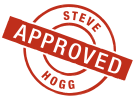
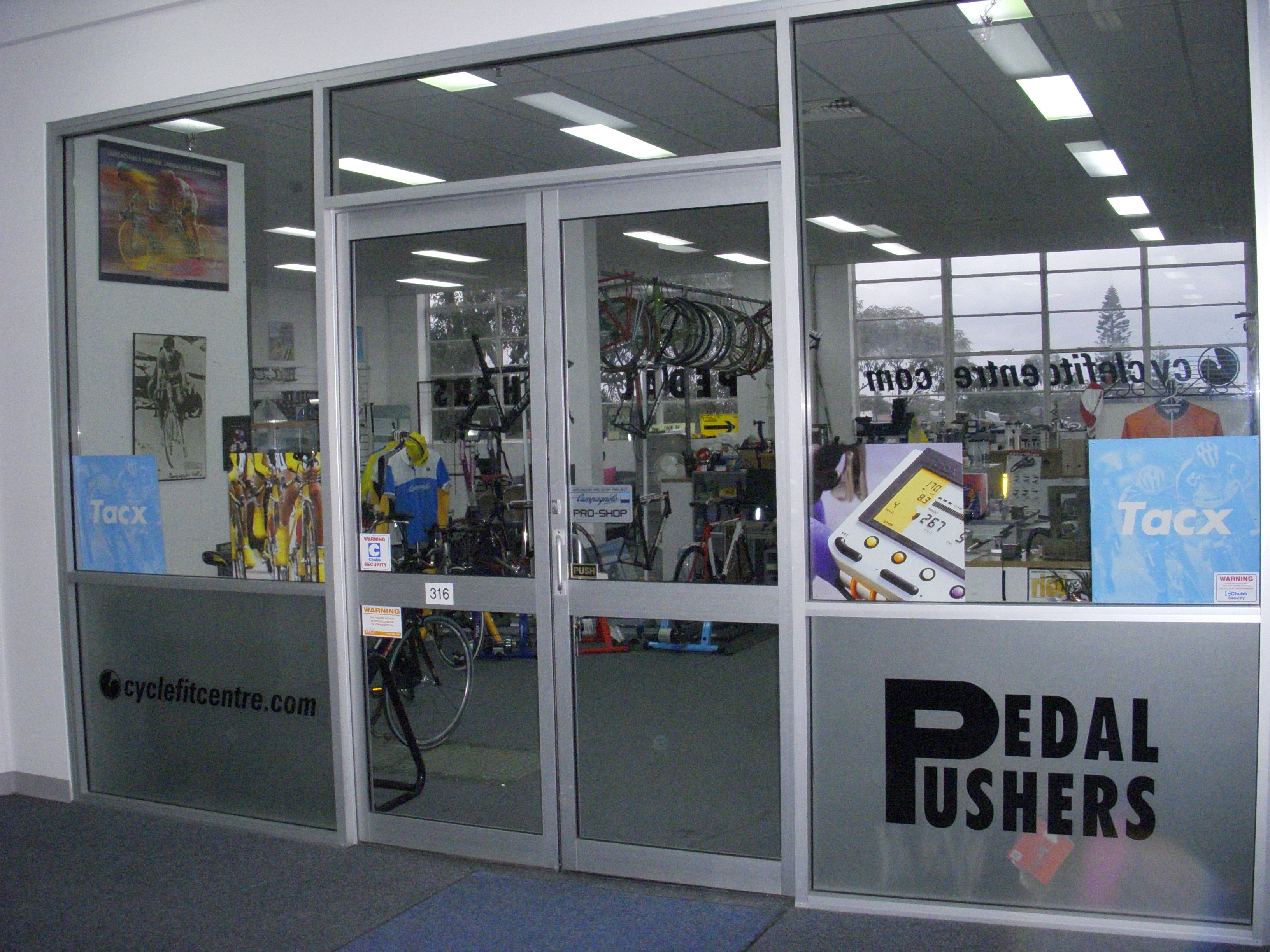




The video also illustrates that at the top of the pedal stroke the mid cleat position makes the angle of the thigh to the torso more acute unless the torso is rotated upwards. In my case this is a challenge and I am in the progress of working off the bike to increase my flexibility.
Do you find this issue with your clients?
Is there an average point at which the angle between the torso and thigh reduces power regardless of the rider’s flexibility?
Great post – Thanks Wayne Sulak
G’day Wayne,
your correct about the knee rising higher at the top of
the pedal stroke relative to the torso. To date I haven’t found a problem with that with the 60 – 70 clients who ride midfoot. And not all of them are particularly flexible. I’m sorry you have this problem. What is the problem?
Hip flexor pain?
Knee pain?
Too long a crank arm?
Hi Steve
Really like reading about people that have their own point of view from their own experiences. I am quite intrigued by midfoot cleat position and if it could work for me.I am concerned that wearing a size 50 shoe mean that the toe overlap would be more of an issue?
Interesting reading,thanks.
Tony
G’day Tony,
Maybe yes, maybe no. At any speed much above walking pace if
you attempt to turn the bars far enough to allow the front wheel to contact the foot you will crash in the attempt well before the foot hits the wheel. Toe overlap is an issue during track stands or walking pace U turns. That’s about it with one exception
I don’t know how you crits you ride in Vic but if you do, your toes will contact the ground when you pedal deep into corners well before your pedals do. That is an issue for some. I just keep pedalling and hang on.
Hi Steve
Thanks for the answer,I was thinking the same thing about toe overlap and have also just finished reading you cleat position post which also answers my question.
I don’t ride many crits and am not particularly interested in them. I like hill climbing and time trials but mostly end up doing road racing on flat to rolling roads that end in a sprint finish.I also do some longer distance Audax type rides and have an interest in improving in TTs.My cleat position as set up by you seems to work quite well.I have a gut feeling about midfoot cleat position that it may be positive for me and being an intuitive person I seem to keep coming back to the idea.
I was wondering what the set up would roughly cost? I know Clint at RBC shoes said he could drill holes in my shoes to suit any cleat position. I reckon if I was going to try it then I’d want to go for the Q rotor chain rings. Then I’d probably need you to set me up.
The other thing is that I imagine if I had one bike set up for midfoot then I would probably have to change the others too. I can’t imagine training on the Gellie with current setup then jumping on the Cannondale to race with midfoot would be very sensible.And then there’s the TT bike.I suppose the best idea would be to try it for a while on one bike first.
As you have seen me a few times now and know I’m keen on improving and keeping my body in good shape.I am interested if you think midfoot would suit me? The pros and cons are listed in the cleat position post but it’s difficult to decide.
Cheers
Tony
G’day Tony,
The best answer I can give you is that in my experience,
the vast majority of people who try midfoot stick with it. You’re not riding crits or trying to be a supersprinter meaning that midfoot is likely and advantage for what you are trying to do on a bike. Best case, there will be substantial performance improvement. Worst case, you won’t perform better in the normal sense but you will recover more quickly from efforts and hard rides and be able to stay on the limit for longer than you can now.
I’m not pushing you one way or the other but you will never know until you try. You certainly have plenty of seat post exposure so dropping the seat is no problem!
Hi Steve
There is one more question I’d like to ask that is not directly on topic.What would be the likely outcome of fitting Q rotor rings and keeping my current cleat position. Do you see any benefit from the Q rotor rings alone?
Looking at my RBC shoes the soles get pretty lumpy further back where the cleats would likely be mounted for midfoot so I’m not sure if would be possible to do it. As they are custom shoes and not cheap
I wouldn’t want to be changing them.Possibly RBC could modify them,I’ll ask him.
Cheers
Tony
G’day Tony,
Rotor Q rings on Position 4 when using a midfoot cleat
position are like the icing on the cake. They make a difference. For forefoot cleat position Q rings, the majority of users seem to think they are of benefit with a minority feeling like there is no advantage. So what I suggest is that if you are going to go midfoot, yes, get the Q rings. If you are not, wait until you need new chain rings anyway and give them a try then.
I use mid-sole cleats. I compete in triathlons in TT position. I too have noticed the more acute thigh angle. I am actually thinking of dropping my crank length down to accommodate that better.
Also, there is one more con in my opinion. When you go to stand and pedal with mid-soles I don’t think its as good as when your calf muscles can help you. That being said, standing for me has never been an advantage and something I try to avoid anyway.
I feel I can bike a bit better with mid-soles — they are good for holding threshold. I think I notice the change most when I start to run after the bike. My calves are much fresher.
G’day Scott,
I’ve seen the occasional midfoot user need to shorten their
crank a touch but usually only if their crank length was marginal for them to start with. At least that is my experience. Re your comments about pedaling while standing. I agree, though familiarity tends to largely sort this out. There is a solution that allows midfoot to feel like ‘normal’ cleat position when off the seat. Get hold of some Rotor Q rings and use them on Position 4. This makes a noticeable positive difference.
Howdy from Austin Steve. Great interview with Gotz. He seems like a driven thinker unafraid of swimming upstream. The midfoot position is not for everyone but it works for me. Since cobbling my own ATB shoes together then having you set my road shoes, I have completed my most demanding rides with minimal negative impact to my iffy left knee. Thanks for your efforts both Gotz and Steve.
On my part Jerry, you’re very welcome. Gotz would say the same.
I ride and race mid-foot for years now and I love it. However, getting the cleats adjusted can be a pain. I don’t understand why major shoe producers are still not accommodating for arch cleat position. However, I initally used a simple, quick and inexpensive way to move the cleats to mid-food so I could try it out. I used the most backwards hole of my Specialized shoes for the most forward hole of my Keo cleat. Then I used two short taper screws for the two backward cleat holes and simply screwed them into the plastic sole of my shoes. Not perfect, not pretty but it took only 10 min to do and I could try them out. I actually used them for at least a year like that without a problem. I bought new Carbon Bont shoes last year and used the proper technique with drilling holes with them but for a start taper screws work as long you have one proper threaded hole at the front.
I really enjoyed this post Gotz & Steve….thankyou both. I am a user of the mid foot cleat position and believe the pros outweigh the cons for me.
I get a bit of flack from time to time from my cycling mates about it and especially about the lower seat height. I made the mistake of succumbing to peer group pressure a while back and raising my saddle (against Steve’s strict instructions at the time of converting me to midfoot to not listen to anyone who says your saddle is too low) and all it did was reduce my power output and start to give me back/hip flexor niggles. On returning my seat height to the one set by Steve, power returned & body issues went away.
I can also recommend the Q rings on position 4 with mid foot as I have tried 2 & 3 and 4 seems to be the best all round location with mid foot. Another positive I find with midfoot & a lower seat height is the noticeably improved bike handling characters when descending due to a lower centre of gravity which is reassuring. I am very interested in getting Steve to help me with a custom Ti frame one day in the future as well.